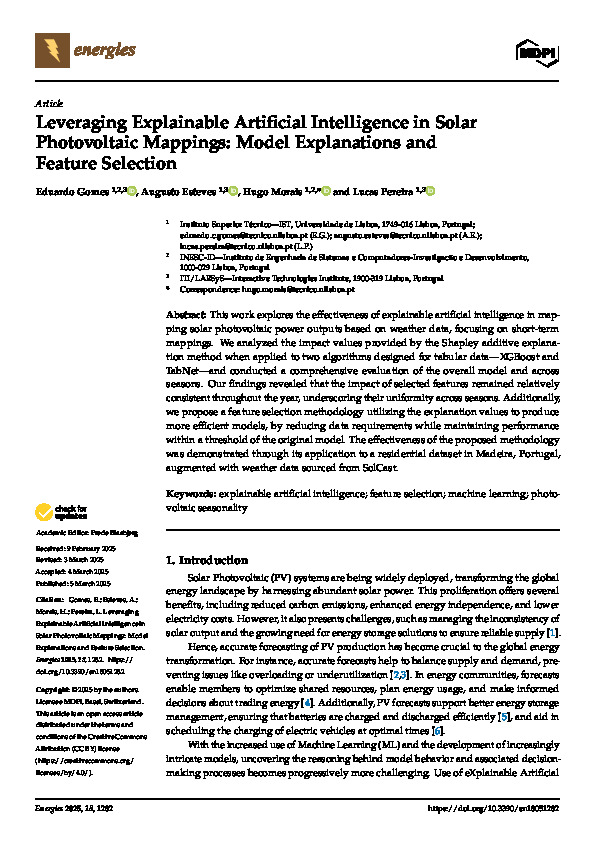Leveraging Explainable Artificial Intelligence in Solar Photovoltaic Mappings: Model Explanations and Feature Selection
Abstract
This work explores the effectiveness of explainable artificial intelligence in mapping solar photovoltaic power outputs based on weather data, focusing on short-term mappings. We analyzed the impact values provided by the Shapley additive explanation method when applied to two algorithms designed for tabular data—XGBoost and TabNet—and conducted a comprehensive evaluation of the overall model and across seasons. Our findings revealed that the impact of selected features remained relatively consistent throughout the year, underscoring their uniformity across seasons. Additionally, we propose a feature selection methodology utilizing the explanation values to produce more efficient models, by reducing data requirements while maintaining performance within a threshold of the original model. The effectiveness of the proposed methodology was demonstrated through its application to a residential dataset in Madeira, Portugal, augmented with weather data sourced from SolCast.

